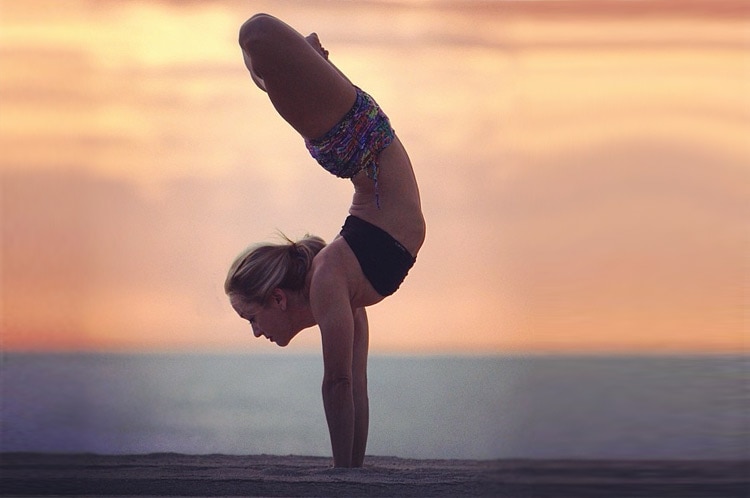When I started the Ashtanga Yoga Practice, I thought arm balances were the most fantastic things…and to this day, they are still magical for me.
I was never a dancer or a gymnast—I started yoga fresh without any understanding of physical fitness. I went to the gym, but I had no real mind-body connection. Through steady yoga practice over the last 14 years, I have gained more strength, steadiness, and more inner awareness than I ever thought possible.
Some people are born with natural strength, and it takes them just a few months of practice to accomplish what has taken me years to learn. Every moment of struggle along the journey has taught me the deeper meaning of strength beyond the purely physical sense of accomplishment.
It is the mental fortitude to stay through the course of difficulty that is the real lesson of strength in the yoga practice.
Urdhva Kukkutasana is one of the most challenging arm balances of the Ashtanga Yoga Third Series.
I was so terrible at this posture that a teacher encouraged me to give up before I even started trying. This person said that my thighs were too big to ever really lift off the ground. This comment hit me right at my insecurities because I have always been a little self-conscious of my thighs.
At first I wanted to collapse and break down emotionally, but then I found the strength to surrender to the practice itself. It took me almost two years, but I did learn the very movement that at first to me seemed so impossible.
Learning Urdhva Kukkutasana
Translated (with a little poetic license) into English as the Flying Rooster posture, Urdhva Kukkutasana is a powerful arm balance that you enter from Full Lotus.
If you Google it you’ll find the translation as Upward Cock posture but that is just a little too cheeky for me, so I have included my translation here. In the traditional Ashtanga practice, you get into Urdhva Kukkutasana three ways; one’s from Headstand, one’s from seated, and one’s from your knees.
Performing them all in a row makes them harder than trying each one on its own. For all three, you need strong shoulders, a super firm core, and a calm mind, but Urdhva Kukkutasana B is by far the hardest.
The Headstand transition makes the arm balances of Third Series so much harder because it is not just one, but a whole series of arm balances that use the same transition right in a row.
Practicing the arm balances of Third Series is super fun, but the real magic happens when they are just part of your daily practice and integrate with you completely.
Building the strength to find stability in all the arm balances of Third Series taught me how to be strong both in body and mind. The lesson of the arm balances is to joyfully endure throughout the journey of building strength—no matter how long it takes.


